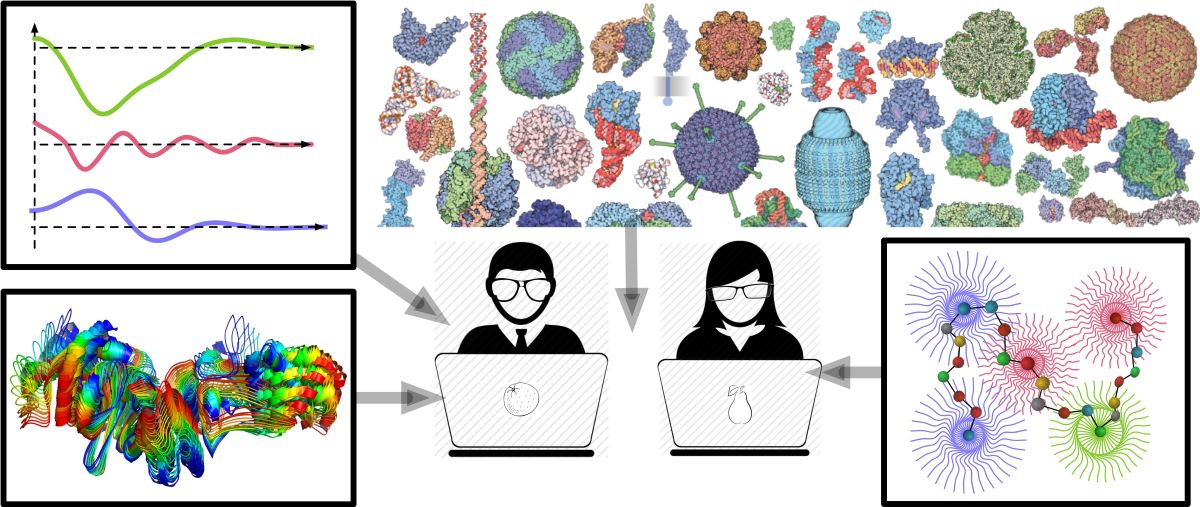Speaker
Description
The Nuclear Pore Complex (NPC) is one of the larger macromolecular complexes in eukaryotic cells. The NPC facilitates rapid and selective transport between the cytoplasm and the nucleus. Existing models of transport do not provide quantitative mechanistic explanations of how some key emergent properties such as the rapid transport rates of molecules as large as ribosomal units and viral capsids arise from the system components and their interactions. To address this question, we constructed an integrative coarse-grained Brownian dynamics model of transport through a single NPC, followed by coupling it with a kinetic model of Ran-dependent transport in an entire cell. The microscopic model parameters were fitted to reflect experimental data and theoretical information regarding the transport, without making any assumptions about its emergent properties. The resulting reductionist model is validated by reproducing several features of transport not used for its construction, such as the morphology of the central transporter, rates of passive and facilitated diffusion as a function of size and valency, in situ radial distributions of pre-ribosomal subunits, and active transport rates for viral capsids. The model suggests that the NPC functions essentially as a virtual gate whose flexible phenylalanine-glycine (FG) repeat proteins raise an entropy barrier to diffusion through the pore. Importantly, this core functionality is greatly enhanced by several key design features, including ‘fuzzy’ and transient interactions, multivalency, redundancy in the copy number of FG nucleoporins, exponential coupling of transport kinetics and thermodynamics rationalized by transition state theory, and coupling to the energy-reliant RanGTP concentration gradient. These design features result in the robust and resilient rate and selectivity of transport for a wide array of cargo ranging from a few kilodaltons to megadaltons in size. By dissecting these features, our model provides a quantitative starting point for rationally modulating the transport system and its artificial mimics.
Raveh et al., 2023, bioRxiv 2023.12.31.573409
| Submitting to: | Integrative Computational Biology workshop |
|---|

